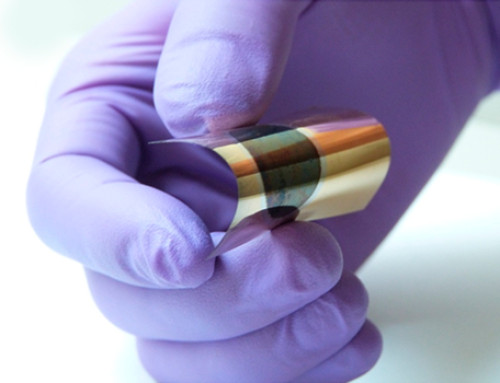
While flexible gadgets such as "electronic skin" and roll-up touch screens are moving ever closer to reality, their would-be power sources are either too wimpy or too stiff. But that's changing fast. Scientists have developed a new device that's far thinner than paper, can flex and bend, and store enough energy to provide critical back-up power for portable electronics. Their report appears in the Journal of the American Chemical Society.
 In their paper, James Tour and colleagues point out that many materials that have been investigated for energy storage potential are pliant but don't pack much power, or they can load up on energy but are rigid. These include polymers and carbon-based materials such as carbon nanotubes, which have been all the rage for certain applications. But these materials fall short as reliable supercapacitors, which are batteries' lesser-known cousins that step in when the main energy source peters out. Seeking a better solution to this energy hurdle, Tour's team took a different approach.
In their paper, James Tour and colleagues point out that many materials that have been investigated for energy storage potential are pliant but don't pack much power, or they can load up on energy but are rigid. These include polymers and carbon-based materials such as carbon nanotubes, which have been all the rage for certain applications. But these materials fall short as reliable supercapacitors, which are batteries' lesser-known cousins that step in when the main energy source peters out. Seeking a better solution to this energy hurdle, Tour's team took a different approach.
They figured out a way to make a flexible thin film out of nickel and fluoride that is full of tiny holes, or nanopores. These pores throughout the material allow ions to flow easily, a critical feature for an energy device. The resulting structure can pack in far more power for its size. The researchers show that they can bend and fold the thin film and recharge it thousands of times with little loss in performance. They also say that manufacturers could easily scale up the process for mass production.
The authors acknowledge funding from the Smalley Institute for Nanoscale Science and Technology and the Air Force Office of Scientific Research MURI program.

 Previous page
Previous page Back to top
Back to top







